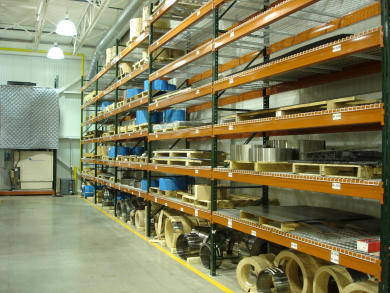Materials & Coatings Overview

Optimization Ensures Better Outcomes
Properly matching materials and coatings will cut cost and enhance performance. We help clients select from a wide variety of choices.
Material Strategy
There is no single material appropriate for all cutting and piercing applications. This is why Cadence offers clients a wide range of materials. This ensures the right mix of properties for each individual application. Additionally, we inventory many shapes (flats, sheets, coils, wire, rod, tubes, and bars) to enable this philosophy to become a reality. The ideal cutting or piercing material would be economical, strong, corrosion-resistant, wear-resistant and totally flexible. Unfortunately, there is no such material. This is why Cadence offers a wide range of material choices. We understand that each client must identify properties and characteristics that are most important to the specific application.
Coatings Strategy
Many applications incorporate some type of coating for improved functional performance, such as:
- Parylene
- Dry film lubricant coatings such as PTFE
- High-performance synthetic lubricants such as PFPE, PFAE, and PFPAE
- Silicone based coatings
- TiN, TiC, TiCN
- Ceramic (e.g. Boron Carbide)
- Diamond
Parylene is a conformal coating that provides a strong moisture barrier and good electronic insulation. Dry film fluoropolymer and silicone-based coatings are typically used to reduce friction. Other coatings, such as TiN, are applied when increased wear resistance is desired. Cadence currently chooses to maximize the knowledge base surrounding coatings through partnerships with the leading coating companies. More information about coatings used by Cadence.
Material Properties to Consider
When choosing optimum sharps material for your application, consider the following properties:
- Corrosion Resistance
- Shape Control during Heat Treat
- Wear Resistance
- Influence on Edge or Point Characteristics
- Cost
- Toughness or Shock Resistance
- Availability
- Size and Finish
Know Your Materials
Below are salient aspects of popular incision and puncture component materials for blades and specialty needles. Please contact us to discuss specific data, or to request further documentation about a specific material.
300 Series Stainless Steels Austenitic stainless steels offer excellent corrosion resistance for the harshest surgical environments. Non-magnetic properties combined with high toughness at all temperatures make these grades of stainless steels an excellent selection for most surgical applications. These austenitic stainless steels also provide more corrosion and shock resistance than 400 series martensitic steel, but sacrifice some wear resistance, hardness, strength, and durability.
301 302 304 304L 316 316L
400 Series Stainless Steels, Heat Treated In general, these materials exhibit excellent toughness and hardness properties and offer good corrosion resistance. Suitable for medical and surgical applications, 400 series martensitic steel is much more corrosion-resistant than regular carbon steel and can be sharpened and pointed to equally-keen sharpness. IncisionTech maintains an extensive inventory of Razor Blade Stainless steel in thicknesses from .010”-.062” thick, as well as 420 “Cutlery Grade” Stainless steel.
410 420 420 (cutlery grade) 440A modified 440A (aka Razor Blade Stainless Steel)
17-4 & 17-7 PH Stainless Steels Precipitation hardened austenitic stainless steels offer excellent corrosion resistance for the harshest surgical environments and superior edge strength to many 300 series stainless steels. This class of materials also provides more corrosion and shock resistance than 400 series martensitic steel, but sacrifices some wear resistance, hardness, and durability.
High-Performance Zirconia Ceramic Recent developments have made it possible to produce extremely sharp blades from transformation-toughened zirconia (ZrO2), commonly referred to as "zirconia ceramic". Although not recommended for high shock applications, the Rc 75 hardness and low friction coefficient make zirconia ceramic an interesting option. Its component life can be more than 100 times that of conventional steel. Other characteristics of Zirconia that make it an attractive material in some applications include, superb corrosion resistance, non-magnetic, and high electrical insulation properties.
Diamond Diamond is the hardest material known, is extraordinarily wear-resistant and has a very small friction coefficient making it an excellent material for use as cutting instruments in the medical field and for material processing. In addition, Diamond presents itself as the "choice material" for the production of micro-technological manufactured components.
